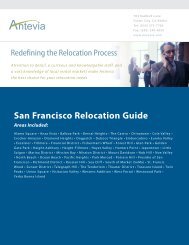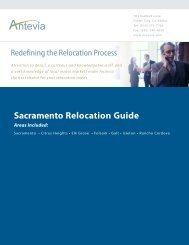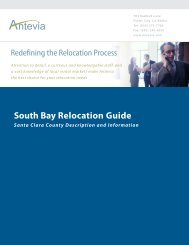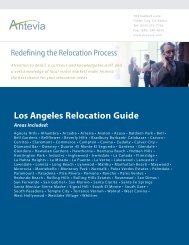The city is divided into three major zones: Old Agoura, a ranch community that formedthe earliest part of the city; Agoura Hills, a predominately suburban area of single-familyhomes that forms the majority of the city; and Agoura South, an older commercial andresidential district of the city, roughly defined as the region south of the 101 Freeway.There are a number of smaller districts in the city, including the Furniture District, theLindero Corridor, and the Reyes Adobe Business District.Two of the main streets in Agoura Hills are Kanan Road and Thousand Oaks Boulevard,which run perpendicular to one another. Agoura Hills is home to a thriving café scene,centered around the corner of Thousand Oaks Blvd. and Kanan Road.According to the United States Census Bureau, the city has a total area of 21.2 km² (8.2mi²). 21.2 km² (8.2 mi²) of it is land and 0.1 km² (0.04 mi²) of it (0.37%) is water.Agoura Hills is in the fertile crescent of alt/rap-metal music giving rise to bandsHoobastank and Linkin Park (as well as Incubus in nearby Calabasas).DemographicsAs of the census GR2 of 2000, there were 20,537 people, 6,874 households, and 5,588families residing in the city. The population density was 969.4/km² (2,511.8/mi²). Therewere 6,993 housing units at an average density of 330.1/km² (855.3/mi²). The racialmakeup of the city was 86.96% White, 1.32% Black or African American, 0.25% NativeAmerican, 6.50% Asian, 0.10% Pacific Islander, 2.09% from other races, and 2.78%from two or more races. 6.85% of the population were Hispanic or Latino of any race.
There were 6,874 households out of which 47.3% had children under the age of 18 livingwith them, 67.7% were married couples living together, 9.9% had a female householderwith no husband present, and 18.7% were non-families. 13.8% of all households weremade up of individuals and 3.0% had someone living alone who was 65 years of age orolder. The average household size was 2.98 and the average family size was 3.30.In the city the population was spread out with 30.5% under the age of 18, 6.3% from 18to 24, 27.6% from 25 to 44, 29.4% from 45 to 64, and 6.2% who were 65 years of age orolder. The median age was 38 years. For every 100 females there were 99.1 males. Forevery 100 females age 18 and over, there were 94.0 males.The median income for a household in the city was $87,008, and the median income for afamily was $95,765. Males had a median income of $72,081 versus $42,656 for females.The per capita income for the city was $39,700. About 2.8% of families and 3.5% of thepopulation were below the poverty line, including 3.8% of those under age 18 and 2.9%of those age 65 or over.EmploymentThere are 14,899 people at least 16 years old, of which 10,645 are in the civilian laborforce and 0 are in the Armed Forces. 360 are unemployed.Of 7,660 females that are at least 16 years old, 4,865 are in the civilian labor force and 0are in the Armed Forces. 4,715 are employed, and 150 are unemployed.Of 10,166 out of the 10,285 workers 16 years or older, 8,454 drive to work alone in amotor vehicle, 793 carpool, 90 use public transportation (including taxicabs), 76 walk,and 82 use other means of transportation to commute to work. 671 workers work athome.The mean time to commute to work (one-way) is 30.5 minutes.Of the 10,285 workers, 7,900 are privately employed, 1,124 are government workers,1,211 are self-employed, and 50 are unpaid family workers.Businesses• Line 6 - a manufacturer of digital modeling electric guitars, amplifiers and effectsprocessorsEducationLas Virgenes Unified School District• Sumac Elementary School
- Page 1: 703 Radford LaneFoster City, CA 944
- Page 6 and 7: • Willow Elementary School• Yer
- Page 8 and 9: has since developed on Valley Boule
- Page 10 and 11: Arcadia, CaliforniaFrom Wikipedia,
- Page 12 and 13: James Dobson, a previous Arcadia re
- Page 14 and 15: EconomyThe median income for a hous
- Page 16 and 17: Burbank, CaliforniaSeal of BurbankF
- Page 18 and 19: In the meantime, the United States
- Page 20 and 21: for service south into Downtown and
- Page 22 and 23: Looking east over Burbank from Univ
- Page 24 and 25: at Lockheed's Skunkworks• Patton
- Page 26 and 27: From Wikipedia, the free encycloped
- Page 28 and 29: José María Verdugo, a corporal in
- Page 30 and 31: and the musical Hollywood Hotel wit
- Page 32 and 33: Community organizationsThe City of
- Page 34 and 35: The municipal pier in downtown Herm
- Page 36 and 37: The modern day punk band Pennywise
- Page 38 and 39: Lancaster is the ninth-largest city
- Page 40 and 41: SealLocationLocation within Los Ang
- Page 42 and 43: Tourists are also drawn to Long Bea
- Page 44 and 45: Shipping and transportationAerial v
- Page 46 and 47: Long Beach has some bike paths alon
- Page 48 and 49: Long Beach Grand PrixThe Long Beach
- Page 50 and 51: During the two Olympic Games held i
- Page 52 and 53: ParadesChristmas boat "parades" are
- Page 54 and 55:
including truck beds,steering colum
- Page 56 and 57:
Private high schools• Cambodian C
- Page 58 and 59:
• St Maria GorettiElementary Scho
- Page 60 and 61:
• Bixby Village• Bluff Park•
- Page 62 and 63:
• Dave Hansen: MajorLeague Baseba
- Page 64 and 65:
• George Deukmejian:Governor ofCa
- Page 66 and 67:
TriviaDouglas "Wrong Way" Corrigan
- Page 68 and 69:
Transportation• Long Beach Public
- Page 70 and 71:
Manhattan Beach) was purchased by A
- Page 72 and 73:
The district as a whole received a
- Page 74 and 75:
• Brian Cook: Powerforward for th
- Page 76 and 77:
Street map from Google Maps or Yaho
- Page 78 and 79:
Palmenthal, the first European sett
- Page 80 and 81:
• The Palmdale SchoolDistrict is
- Page 82 and 83:
Valley College maincampus.• Chapm
- Page 84 and 85:
original village in the1800’s.•
- Page 86 and 87:
Quartz Hill (district).Some P.O. bo
- Page 88 and 89:
eliable that wind turbines are used
- Page 90 and 91:
• Grubb & Ellis• ICS Perely & S
- Page 92 and 93:
Public transportationThe Palmdale T
- Page 94 and 95:
Street map from Google Maps or Yaho
- Page 96 and 97:
The original inhabitants of Pasaden
- Page 98 and 99:
Southern California in 1941, and th
- Page 100 and 101:
• The Waverly School• Mayfield
- Page 102 and 103:
observatory sinceLowe was such apat
- Page 104 and 105:
parrots fall into as many as five d
- Page 106 and 107:
• The Gamble House• Old Town Pa
- Page 108 and 109:
According to the local newspaper, t
- Page 110 and 111:
allows properties within two to thr
- Page 112 and 113:
Redondo Beach is the birthplace of
- Page 114 and 115:
A typical stretch of Valencia Boule
- Page 116 and 117:
Television and movie productionBeca
- Page 118 and 119:
Santa Monica is a coastal city in w
- Page 120 and 121:
Palisades Park. The sheds were open
- Page 122 and 123:
The city owns and operates a genera
- Page 124 and 125:
DemographicsThe seal of the City of
- Page 126 and 127:
See also• Lynette Fromme,criminal
- Page 128 and 129:
City of Torrance, CaliforniaSealLoc
- Page 130 and 131:
Torrance Beach lies between Redondo
- Page 132 and 133:
• Other schools: Thelargest Engli
- Page 134 and 135:
• Lisa Moretti - WWE's"Ivory"•
- Page 136 and 137:
Website: www.weho.orgWest Hollywood
- Page 138 and 139:
As of the census GR2 of 2000, there
- Page 140 and 141:
The West Hollywood Halloween Carnav







